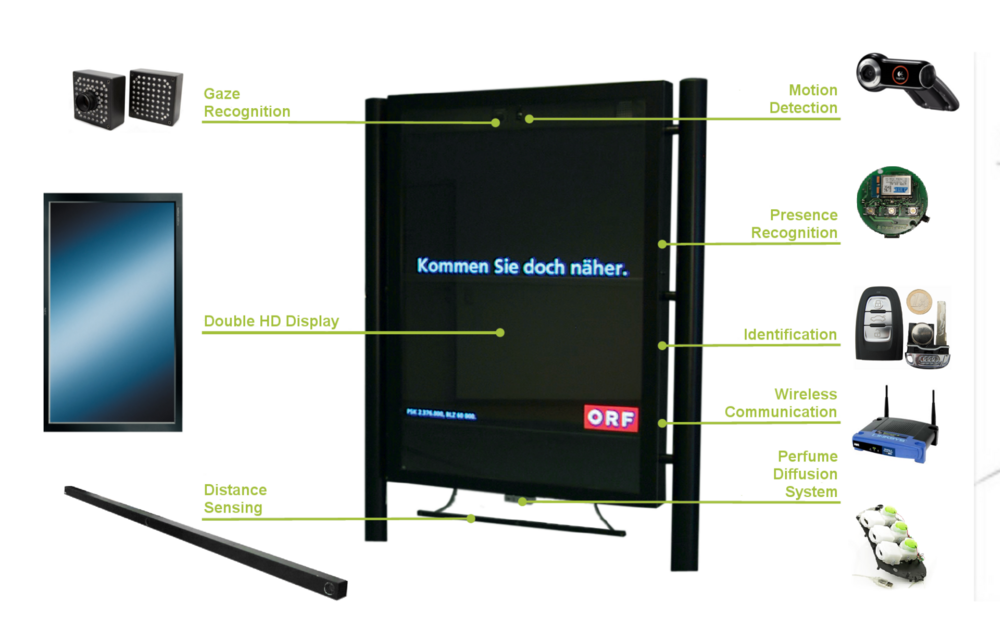| Funding | FFG Research Studios Austria, 1st Call | ||
| Project no. | 818652 | ||
| Duration | 2008-2011 | ||
| Consortium | Johannes Kepler Universität Linz*, Research Studios Austria FG, EPAMEDIA, CocaCola Österreich, Enterprise Sports Promotion, OÖ. Theater und Orchester GmbH | ||
| Role | Proposer, Coordinator |

The objective is the development of a highly-innovative framework for the networked, decentralized operation of heterogeneous, long-lived and adaptive DISPLAY services.
Ranging from sub inch, wrist worn watch displays, to double inch size displays embedded into mobile phones and PDAs, to 10"- 30" displays of traditional personal computer systems, 40"-100" displays in entertainment, advertising and education systems, up to huge, 500-1000m² public screen systems, displays are a truly pervasive technology surrounding us in almost any life situation.
The objective of the proposed Research Studio Pervasive Display Systems (DISPLAYS) is the development of a highly-innovative framework for the networked, decentralized operation of heterogeneous, long-lived and adaptive DISPLAY services. The framework will be grounded on a foundational re-thinking of the linkage among physical display systems and current display technologies (CRT, LCD, PDP, OLED, projection based, LCos or DLP) together with the associated infrastructures (IP networks, wireless communication, BT, UMTS, WiFi), and the presentation logic coming form display service models, content management systems, and online data repositories (WWW). Understanding networks of physical displays as "information ecosystems", constituted by situation-aware, cooperative ensembles of interaction entities among humans and their environment, DISPLAYS will (i) define an innovative model for display services, content components and userinteractions, (ii) studying and experimenting display ecosystem architectures to enforce various forms of spatial selforganization, self-composition, and self-management for display data and services, and (iii) implementing an innovative infrastructure for the deployment and execution of display services, and for the management, trading, delivery and displaying of content.
The effectiveness of the proposed solutions will be made available to top Austrian technology innovators within three distinct lines of research (RLs). In close cooperation with stakeholders in public advertising, prime advertisers, event organizer, culture institutions, content authorities and ICT solution providers, DISPLAYS will address the following F&E challenges:
The proposed research studio DISPLAYS will create novel display frameworks (hardware, software and tools) based on new scientific knowledge and the experience of the Institute for Pervasive Computing at the University of Linz, and its well-developed alliances and partner companies. The resulting pool of solutions will significantly change business processes in the advertising and media industry, will accelerate access to novel, emerging advertising markets, and enable to gain a competitive advantage in established markets through innovation.
This paper presents the development of Spectacles-a modular autonomous, wireless displays platform for integration with eyeglass frames. The Spectacles hardware-software platform includes local computation and communication facilities, an integrated power supply, and modular system building blocks, such as sensors, voice-to-text and text-to-speech components, localization and positioning units, and microcameras and micodisplays units. Developers can easily assemble the system building blocks to application-specific instances of wearable displays.